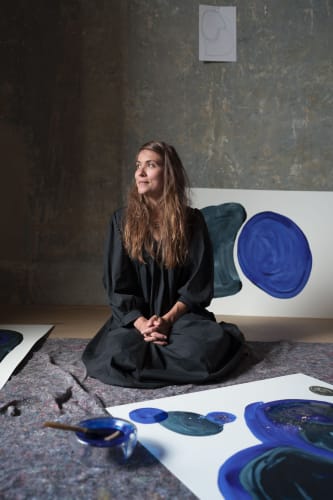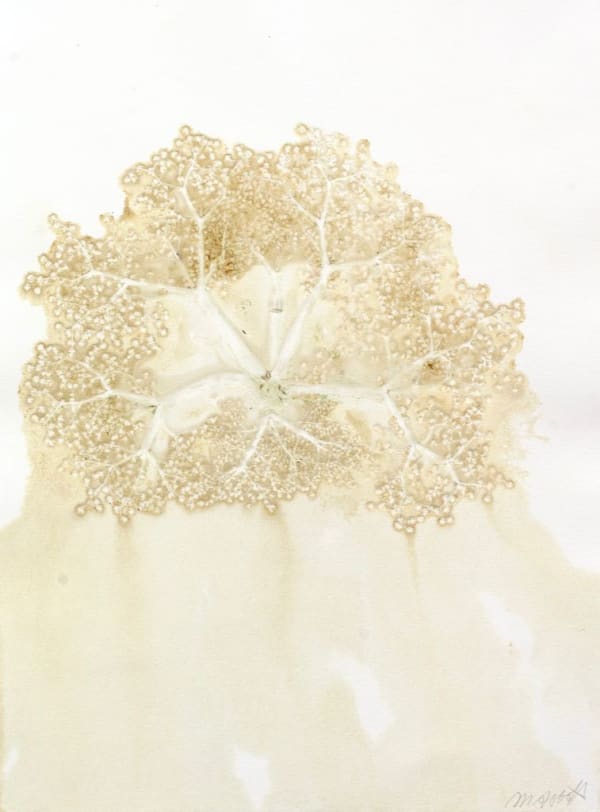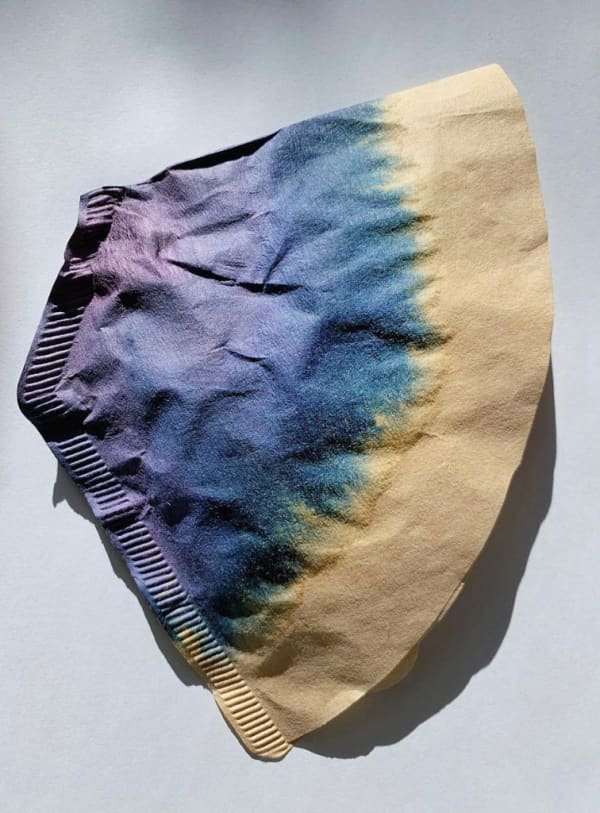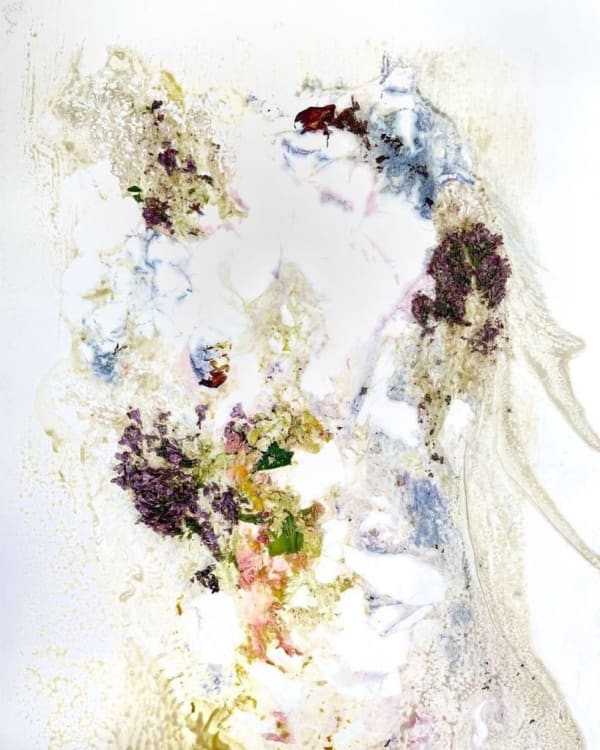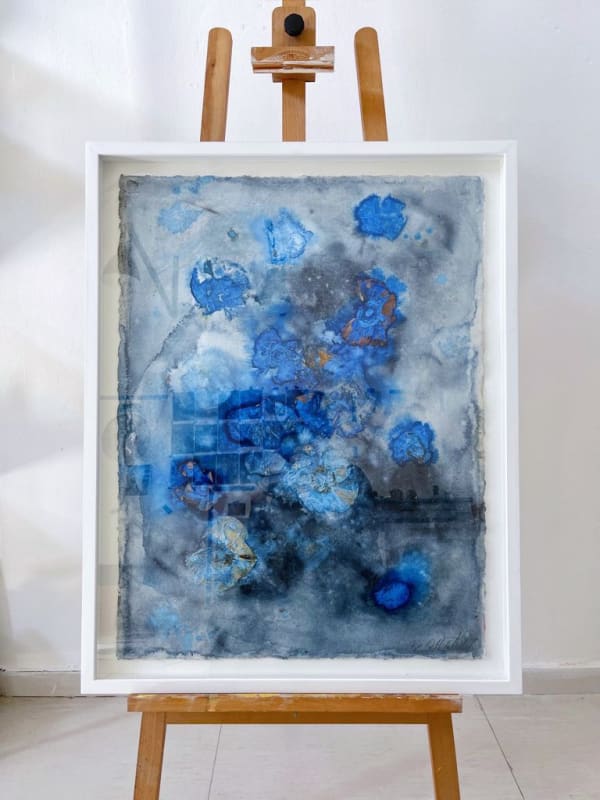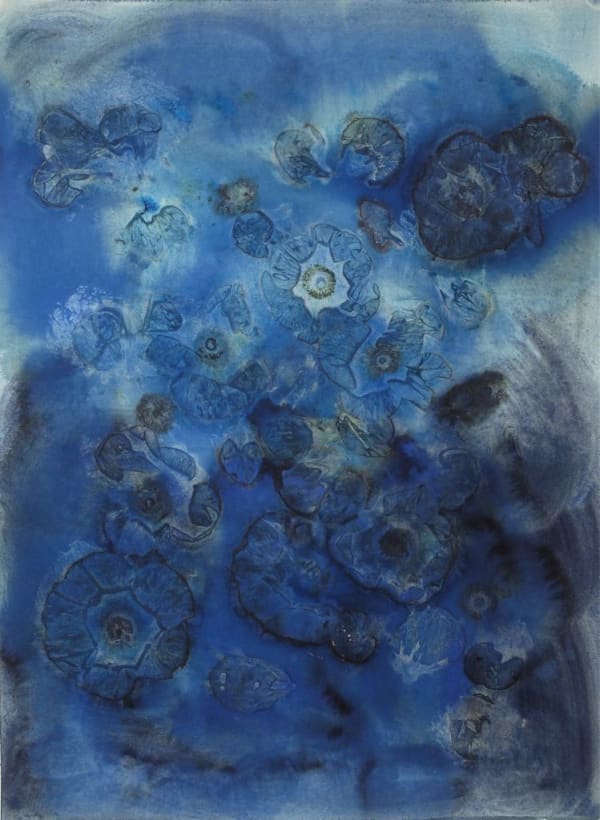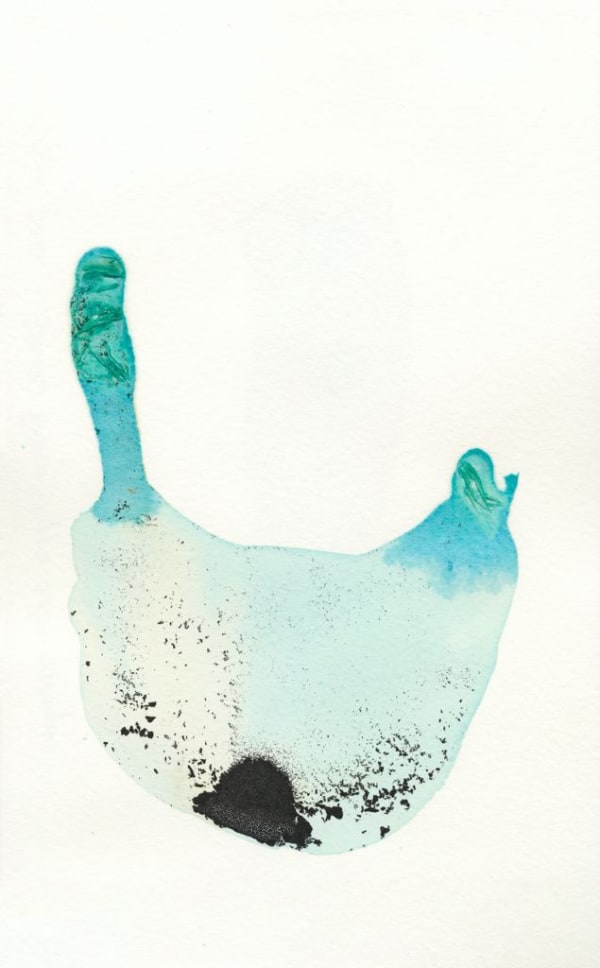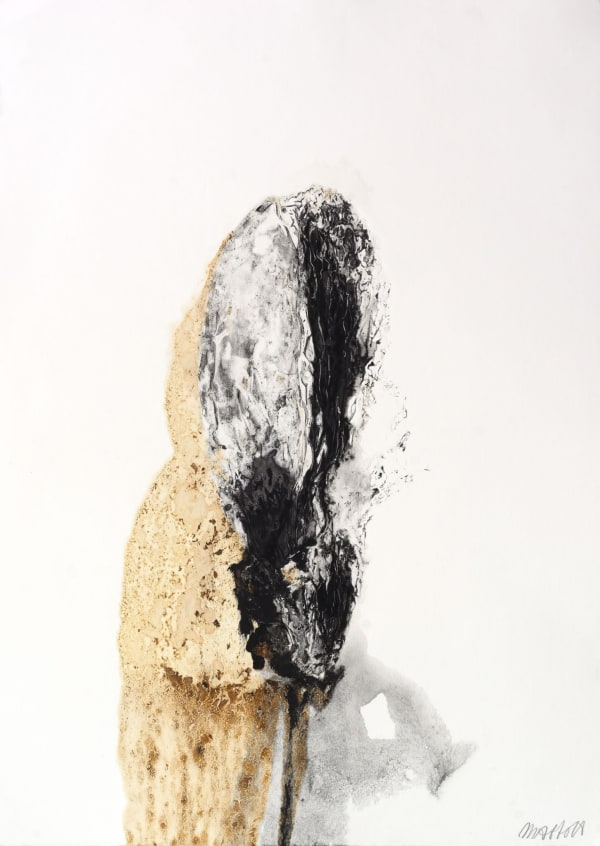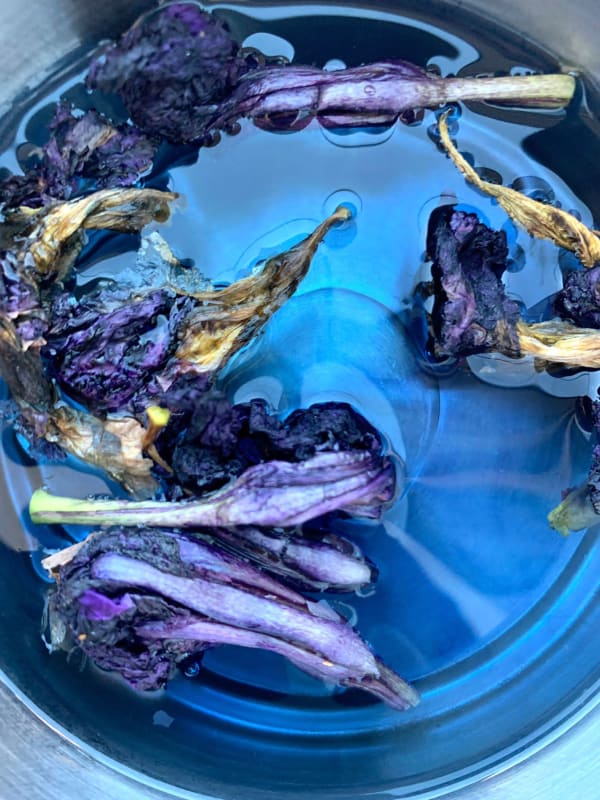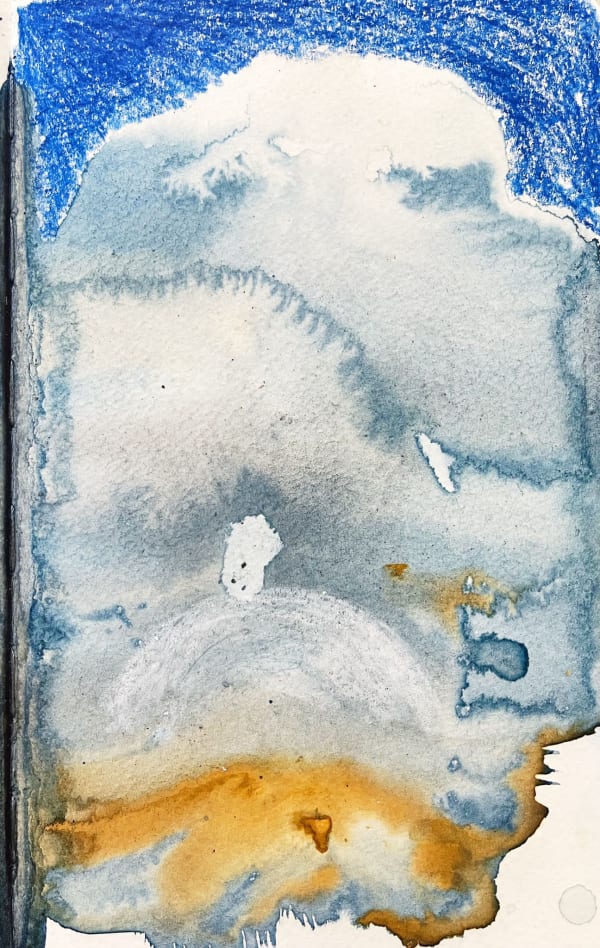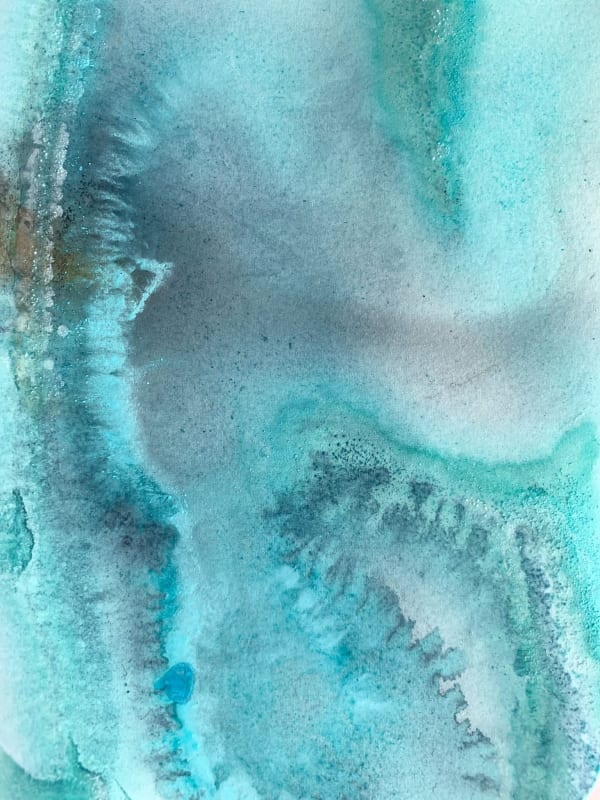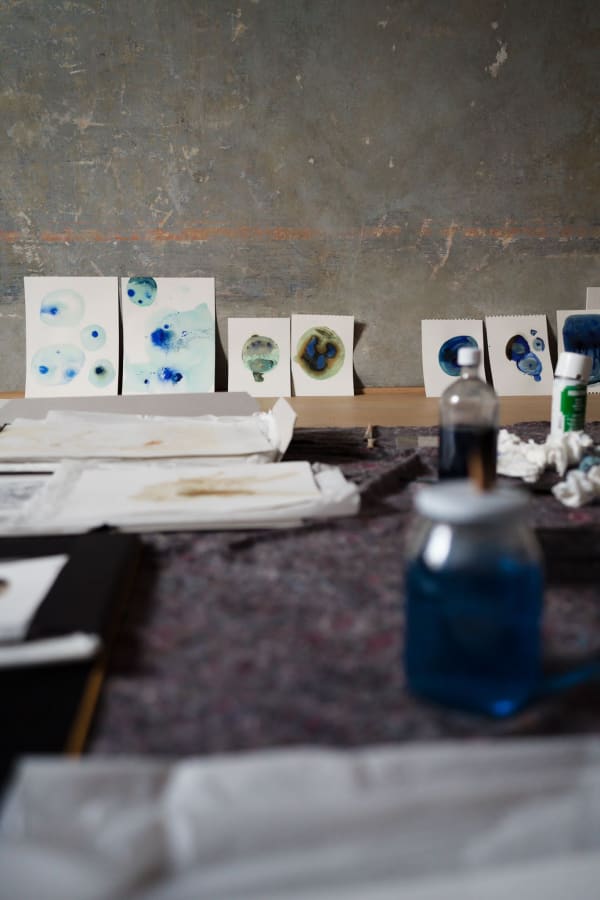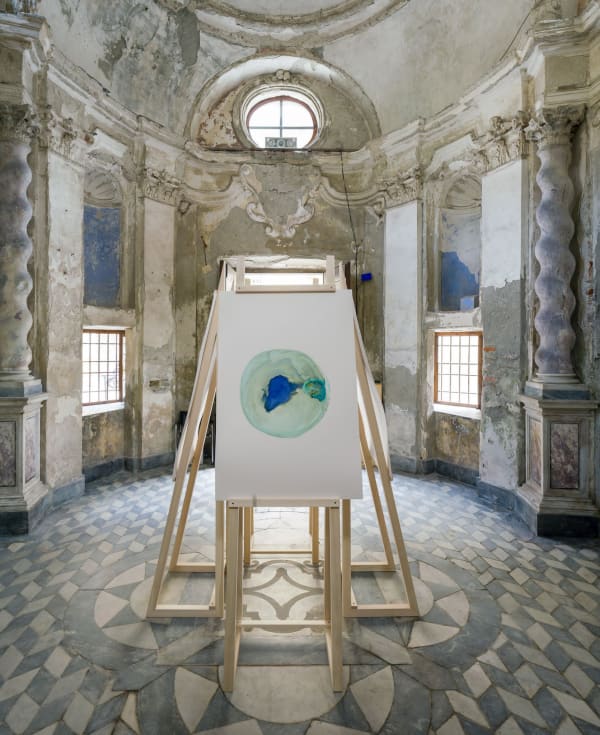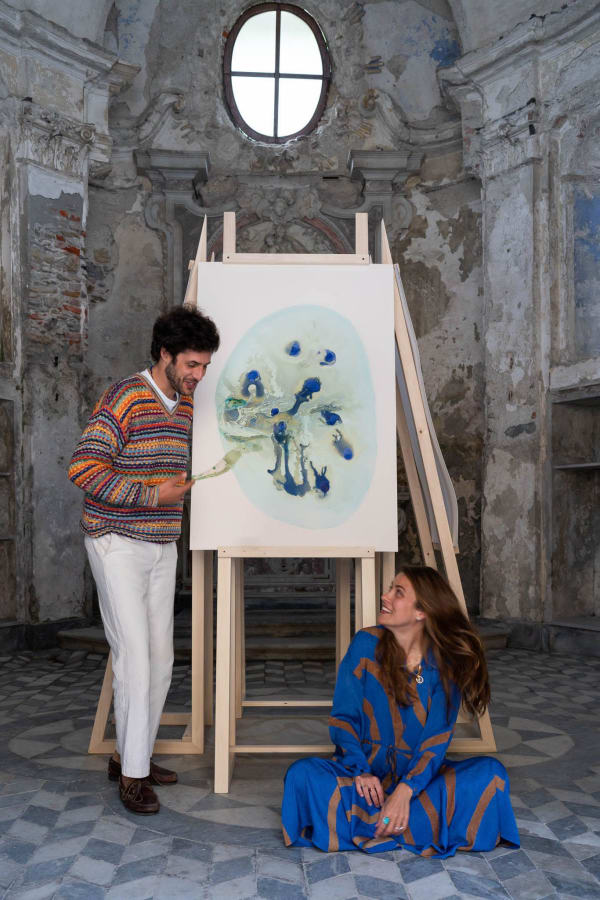Marta Alexandra Abbott was born in Amsterdam and grew up between Connecticut and Prague. She lived in New York City before settling in Rome, Italy. Marta has studied painting, drawing, art restoration and floral design. From early on, her fascination with the natural world has largely informed her work in both subject matter and process. Working primarily on paper and canvas, her materials include handmade natural inks, earth pigments, and oil paints, as well as other organic and non-traditional materials.
In her exploration of nature, beauty, and the human experience of both, Marta is interested in the rhythms, cycles, transformations, and oft unnoticed details of botanical specimens and of the natural world in general. She takes notice of the stories we tell and orientation we find in the night sky, in the language of light and shadow, and in the role time and place play in transmuting and constructing microcosms and macrocosms. She creates with a focus on process, experimentation and following her curiosity down strange paths with unpredictable outcomes and seeks ways to communicate that which she discovers along the way.
-
How would you describe your work to somebody who has never seen it?
I would tell them my work is very much about material, process, time and experimentation. I would say that what I do is about investigation and observation of details and microcosms, and about finding ways to translate the beauty I see both in those tiny systems, as well as the larger ones that our cosmos is comprised of.
I would add that it’s about finding beauty in that which is often overlooked and encouraging people to look more closely To discover something new and something more than they understood was there before. The relationship we as humans have with nature and beauty is something I'm interested in, and color and materiality are often tools I use to communicate what I find. People often say my work feels delicate or even peaceful, but the materials I use, such as plants, flowers, and colors from the ground, are ones that have survived time and the elements, many an actual storm.
I like the idea of quietly showing the strength in that which appears to be fragile.
beautiful descriptions. Finish this sentence: “I can’t live without...
Music
If you could own one piece of artwork in the world, as if money or likelihood was no issue, what would it be and why?
If I could own one piece of artwork in the world it would be a piece, just about any piece, by Cy Twombly. The spontaneity in his work, the way one feels such a direct line between what he felt and what his impulse was while creating, and the marks that ended up on the canvas, is so inspiring to me. That kind of link, one that feels so based on intuition, instinct and innate energy, one that ignores that which is not essential or contrived, always moves me and makes me want to run to my studio. His work, to me, is potent and enduring reminder of the importance and the beauty of communicating your creative impulses directly and unadulteratedly.
If you could have a meal with any artist from any time, who would the artist be, what would you eat together and why?
I would love to have a meal with Dora Maar. I’ve long been fascinated by her, both her work and her personal story. She’s so often now referred to in the context of being Picasso’s muse, but she was a prolific, accomplished and forward-thinking artist who worked until the end of her life. It would be incredible to get to hear her stories and to learn more about what was behind the work she made.
-
Have you had any memorable responses to your work?
I would say that in a way, every response to my work is memorable to me. I’m always so curious to hear what the work transmits to others. When you spend so much time with something, it can become harder to see it from new or different perspectives, so finding out what someone else discovers in images I have such an intimate relationship with always leaves an impression. It helps give me new ways to see, and that is always a memorable experience.
Professionally, what is a goal you would like to achieve?
I’m finding that the more I do, the more my goals shift and change according to the new projects I find myself working on or the people I’m working with, so it’s hard to give one specific example. Right now I mainly hope to keep finding ways to evolve and grow in what I do.
What are you working on at the moment?
I’ve been especially interested in celestial themes lately, which is not so much a new topic of interest for me as one I feel especially drawn to right now. I’m currently creating a body of work based upon a story I wrote, a love story really, about the moon and Venus. So I would say my head is very much in the stars at the moment. As much of my work is, this series is an acknowledgment of the connection between heaven and earth and man and nature. I look at the story I wrote as a sort of modern myth, and the paintings I'm making will help tell the story. Another thing I’m really excited about is a residency I recently finished at Numeroventi in Florence together with artist Nicolas Denino. He and I have an on-going collaborative series called Liminal Forms and it’s about discovering what can happen in the in-between spaces, in the places that exist outside definition or clearly defined boundaries, where there is room to change and grow and take new shape. We combine our respective mediums, techniques and philosophies on paper in the name of collaboration, human connection, and charting new territory.
-
Tell me a bit about your work at the historic printmaking workshop?
Fondazione il Bisonte is a print-making studio in Florence that was established in 1959. It has seen the likes of Pablo Picasso and Henry Moore, as well as many other notable artists, and it’s an incredible facility where one can both work and learn. I’ve always really loved printmaking and had been hoping to spend time at Fondazione il Bisonte for some time. What finally brought me there was a project with Toronto Ink Company ( @torontoinkcompany ) earlier this year which had given me a chance to experiment with marble dust as the base for an ink.
I decided to try my hand at making a printmaking ink instead one to paint or draw with, so I contacted Fondazione il Bisonte for help and guidance. Over the past few months I've been spending time there, re-learning printmaking and conducting experiments with material and color. The pieces I've made combine the marble dust ink with flowers in the press. The marble dust takes on some of the colors and textures of the flowers, so instead of human hand sculpting marble, it sort of becomes a process of flowers sculpting and interacting with stone. Flowers and stone are perceived to be so materially different, but really both are strong and durable, while simultaneously fragile and vulnerable, each in their own ways. I like to think that on the page, I've found a way to combine them, to connect them, and to show the quiet strength and deconstructed beauty of both.
I’ve heard you describe your practice as trying to find ways to communicate our connection with the natural world! Can you tell me a bit more about this?
I’ve always marveled at the way our natural environment affects us and the ways we find to mimic nature. We often don’t see ourselves as being a part of nature, and tend to live our lives disconnected from it. Humans created navigational systems from a random and immense quantity of points of light in the sky, we found ways to communicate ideas using materials from the ground, we created myths and legends to help us understand our world, often constructing those stories from the wonder sparked by the witnessing of natural phenomena like lightening or rainbows, we found ways to coax specific reactions and behaviors from plants. It's all incredible to me. And then when you stop and examine all the little microcosms around you, and start to notice the way they echo the macrocosms, and the way they influence our perception of true beauty, which is one of the most powerful and moving things to experience, lots of different little points start connecting, and you walk around each day attuned to different things, things you may not have noticed before which help you find even more beauty and maybe bring you understand yourself and your world a little differently. That’s some of what I want to transmit in my work.
-
How has the pandemic effected your work, has it been positive in the fact that you have so much time on your hands? Or as I imagine the pressure that many have felt to be productive created a negative impact?
I wouldn’t say I found myself with too much time on my hands, mainly because I have a son who was about to turn two just as our lockdown here in Italy started, so it initially left me with lots of questions about how to continue making work as well as what kind of work it even made sense to focus on. A whole year’s worth of plans and shows suddenly disappeared, but I decided to do my best to see it as a challenge to be met instead of a defeat. An exercise, if perhaps a more rigorous one than I could have ever imagined, in problem-solving and creative thinking. It wasn’t easy or simple, but it did teach me a lot about accepting having to work within unexpected constraints and to find ways to continue to create using what I had immediately available to me.
What do you like/dislike about the art world?
I like the bonds that can form over time through collaboration and cooperation, and I like observing the fascination and love people have for something that is so hard to define while also being so essential to who we are as humans. In general, in the art world and otherwise, one thing I dislike is creating just for the sake of satisfying a trend.
What do you believe is integral to the work of an artist?
I believe that what is integral to the work of an artist is to be true to one's self, as I mentioned above. To work in a style and in a way that reflects the direct pathways between mind and hand and heart and soul, not unlike the incredibly intuitive way a child paints. I’ve had conversations with friends in various creative fields who have voiced hesitation about making a work too personal, for example, out of fear that no one will be able to connect with it. I think, though, that when your work comes from a very personal place, that’s actually when it resonates most with others. So I would say
Who are your favourite contemporary artists?
Nicolas Denino @nicolasdenino , Jason Logan @torontoinkcompany, Hiroaki Ooka @Oo___ka , Julia Norton @juliapnorton, Chioma Ebinama chiomaaaaaa Sam Hodgeson @samhodheart Claire Curneen @clairecurneen , Harley Weir @harleyweir , Karen Miranda-Rivadeneira @karenmirandarivedeinera , Meghann Riepenenhoff @meghannriepenhoff , Elspeth Diederix @miraclegardening , Awoiska van der Molen @awoiska_vandermolen , Yuri Shimojo @yurishimojo , Paula Doepfner @pauladoepfner , Michael McGrath @m.r.McGrath, Dawn Ng @Dawn__Ng, Balarama Heller @balaramaheller, Armando Mesias @armandomesias , Louise Beer @louise.beer , Melanie King @melaniekatking , Andreas Senoner @andreassenoner , Flora Temnouche @flora_temnouche , Francesca DiMattio @francescadimattio , Claire Oswalt @claireoswalt
What one song should be added to the She Curates playlist?
No Mind, Never Matter by Anima!
